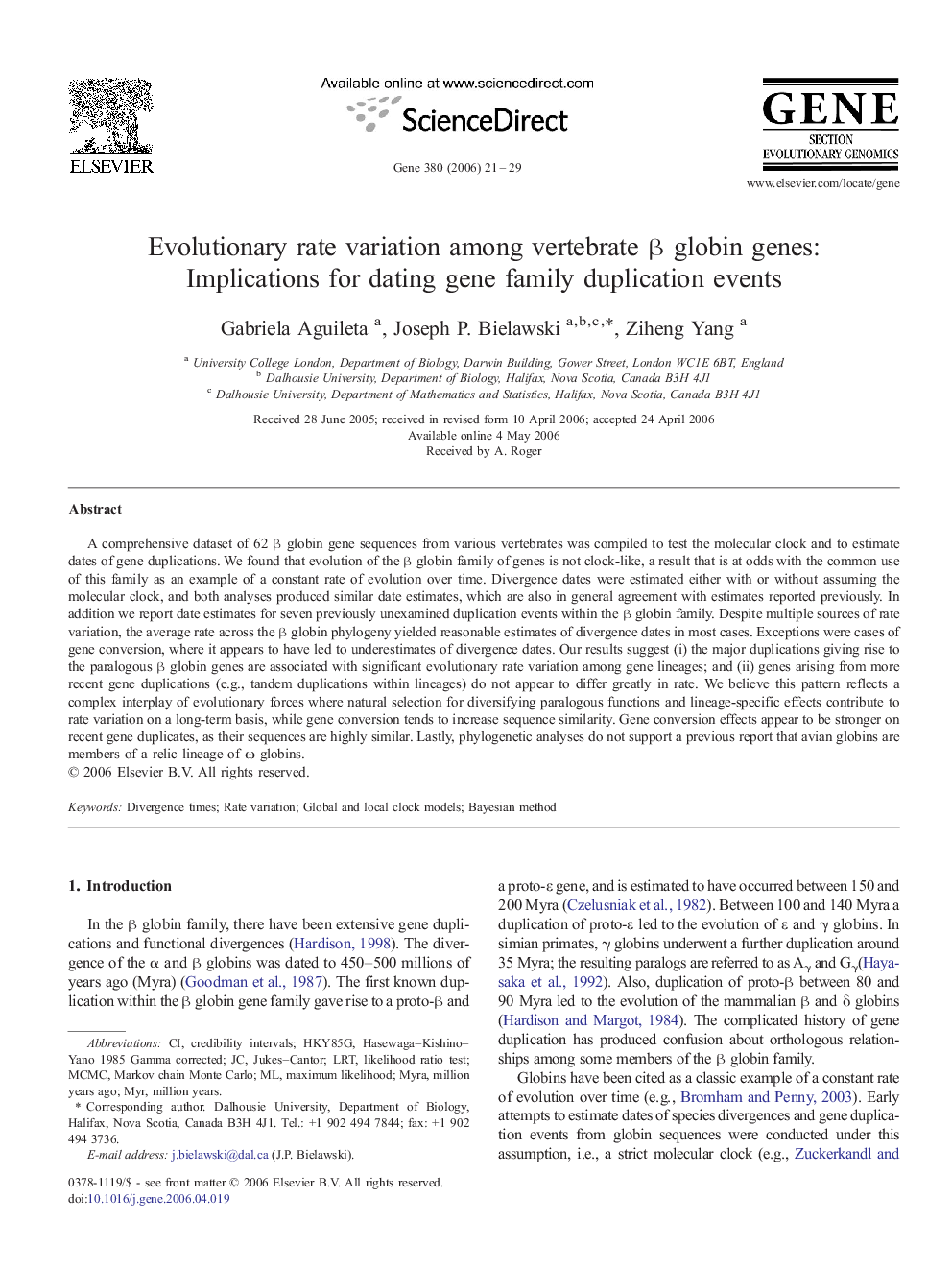| Article ID | Journal | Published Year | Pages | File Type |
|---|---|---|---|---|
| 2820088 | Gene | 2006 | 9 Pages |
A comprehensive dataset of 62 β globin gene sequences from various vertebrates was compiled to test the molecular clock and to estimate dates of gene duplications. We found that evolution of the β globin family of genes is not clock-like, a result that is at odds with the common use of this family as an example of a constant rate of evolution over time. Divergence dates were estimated either with or without assuming the molecular clock, and both analyses produced similar date estimates, which are also in general agreement with estimates reported previously. In addition we report date estimates for seven previously unexamined duplication events within the β globin family. Despite multiple sources of rate variation, the average rate across the β globin phylogeny yielded reasonable estimates of divergence dates in most cases. Exceptions were cases of gene conversion, where it appears to have led to underestimates of divergence dates. Our results suggest (i) the major duplications giving rise to the paralogous β globin genes are associated with significant evolutionary rate variation among gene lineages; and (ii) genes arising from more recent gene duplications (e.g., tandem duplications within lineages) do not appear to differ greatly in rate. We believe this pattern reflects a complex interplay of evolutionary forces where natural selection for diversifying paralogous functions and lineage-specific effects contribute to rate variation on a long-term basis, while gene conversion tends to increase sequence similarity. Gene conversion effects appear to be stronger on recent gene duplicates, as their sequences are highly similar. Lastly, phylogenetic analyses do not support a previous report that avian globins are members of a relic lineage of ω globins.
